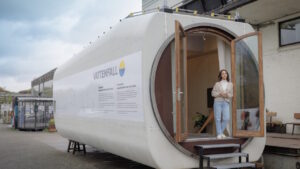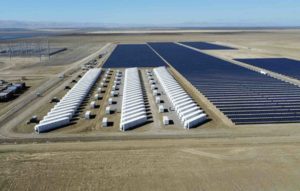The cost of large-scale solar projects has fallen by one third in the last five years and big solar now competes with wind energy in the solar-rich south-west of the United States, according to new research.
The study by the Lawrence Berkeley National Laboratory entitled “Utility-Scale Solar 2012: An Empirical Analysis of Project Cost, Performance, and Pricing Trends in the United States” – says the cost of solar is still falling and contracts for some solar projects are being struck as low as $50/MWh (including a 30 per cent federal tax credit).
The LBNL study is the first detailed investigation on the costs of “big solar”. The US has more than 4,000MW of utility-scale solar (any installation more than 2MW) and has been building them since the 1980s. The US has more “big solar” than rooftop solar, in contrast with Australia, where nearly all solar capacity has been built on rooftops.
The most interesting observation is that solar is now competing with wind energy on costs. If this were to happen in the Australian market it would likely cause a rapid reshaping of the projects needed to acquit the 20 per cent renewable energy target, which is criticised in many quarters for being focused only on wind energy.
This graph below illustrates just how dramatic that fall has become, although it should also be noted that PPA prices for wind energy have also nearly halved in the past year, although the sample is small.
But here’s another reason why solar is attractive. Because solar generates its output during the day, when demand and wholesale prices are normally higher, it can generate much higher revenue than wind farms. LBNL quantifies this at around $25/MWh. “In 2012 and 2013, solar has given wind a run for its money,” the researchers say. “This is particularly true given solar’s greater time-of-delivery value to utilities.”
It also notes that wind energy and solar farms could be co-located because their output is complimentary, and infrastructure costs such as sub-stations could be shared.
Both these observations are interesting for the Australian market, particularly for developers such as Infigen Energy and Pacific Hydro, which are looking to add solar to their wind portfolios and looking to bypass the blockade of the major utilities by either “playing” the merchant market – generating revenue from spot prices, or writing their own contracts. Both companies are looking at co-locating some wind and solar projects.
This next graph below shows the progress of the various technologies, and plant sizes, over the last 10 years. It is interesting to note that solar PV outnumbers CSP and CPV by a large margin, but smaller plants are often more cost-effective than larger ones. That’s because of the extra costs in permitting and other factors of large installations, and because most solar PV arrays are now built in small modules.
“Once you move beyond installing a few power blocks, economies of scale appear to diminish (or perhaps be offset by higher costs elsewhere),” the researchers note.
To illustrate the price falls, the LBNL study cites the Copper Mountain project in Colorado. It began with a CSP project, before making three separate additions using thin-film solar PV technology, and then a fourth with crystalline silicon based solar PV modules.
The first two solar PV contracts in 2008 and 2009 were struck at $150/MWh for 58MW of capacity, the next stage was struck at $103/MWh for 150MW capacity, and last year a contract was struck for another 250MW of capacity at $82/MWh.
Given the underlying similarities among these four projects – location, duration of contract – it says that the near halving of prices over the three-year period can be attributed primarily to the declining cost of solar modules and other balance-of-system costs. (It would be interesting to see what the likes of Bjorn Lomborg, the new Coalition pin-up boy who opposes deployment on the basis that only R&D can deliver cost reductions, make of this).
Another interesting observation from LBNL is that most of the contracts written in recent years do not escalate in nominal dollars over the life of the contract. This means that in real dollar terms, the pricing of the contract actually declines.
This means that towards the end of their contracts, the solar plants (including PV, CSP and CPV) contracted in 2013 will on average will be delivering electricity at less than $40/MWh. This is likely to be considerably less than fossil fuel plants at the same time, given the expected cost of fuels and any environmental regulations.
And here’s one final graph on capacity factors. It notes utility-scale solar installations with single axis tracking are achieving capacity factors of more than 30 per cent, while the best performing solar installations without tracking are more than 25 per cent.















